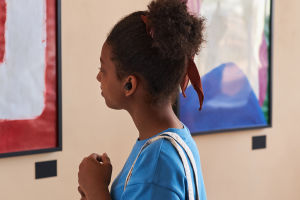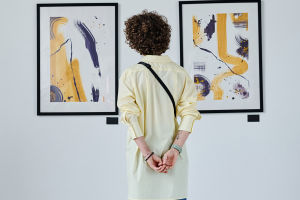Light and Shadows
Photography is often described as painting with light. From the way it shapes the scene to how it interacts with the subject, light plays an incredibly important role in creating the mood and narrative of an image.
Whether it's the soft, ethereal glow of dawn or the harsh, dramatic shadows of midday, light has the power to evoke a range of emotions and tell compelling stories without words.
As photographers, understanding how to manipulate light is essential in producing images that resonate with the viewer. But how do different types of light and shadows influence the emotional atmosphere of a photograph? In this article, we will explore the role of light and shadow in photography, how photographers can use them to enhance storytelling, and the techniques you can use to capture the perfect mood.
The Emotional Power of Light
When we think about light, we often associate it with certain emotions. Bright, natural light tends to convey feelings of happiness, optimism, and openness, while dim, low light can evoke mystery, sadness, or suspense. The way light interacts with a subject or scene can completely change the emotional tone of an image.
For example, soft, diffused light, often achieved through overcast skies or using softboxes in studio settings, can create a calm, serene atmosphere. This kind of light is ideal for portrait photography, where the gentle illumination flatters the subject and brings out a peaceful, introspective quality. On the other hand, hard light, such as the direct sunlight at noon, can create bold contrasts and emphasize textures and shapes.
This light can evoke a more intense, dramatic mood, often used in fashion or conceptual photography to create strong visual impact.
Shadows: The Silent Storytellers
Just as light has its emotional significance, so do shadows. Shadows can add depth, dimension, and mystery to a photograph, often becoming the unsung heroes that bring the composition together.
The play between light and shadow in a photograph is what often makes an image visually interesting, creating layers of meaning that go beyond the obvious.
Consider how a shadow might be used to conceal part of a subject's face in a portrait. This could hint at hidden emotions or add an element of mystery. Alternatively, the way shadows stretch across a scene can lead the viewer's eye, guiding them through the story without needing to be explicitly told.
Shadows also have symbolic meaning in photography. In certain cases, they can represent themes of loneliness, isolation, or danger, while in other settings, shadows can act as protective or intimate elements. For example, in a wedding photo, shadows may be used subtly to highlight the bond between the couple, while in a thriller, shadows could intensify the sense of suspense or foreboding.
Lighting Techniques for Creating Mood
Different lighting techniques can be employed to achieve various emotional effects in photography. Here are a few key methods that photographers use to shape mood and atmosphere through light and shadow:
1. Backlighting: This is when the light source is placed behind the subject, creating a silhouette effect. Backlighting can be used to evoke feelings of mystery, freedom, or hope. It's a common technique in portrait and landscape photography, where the subject's form is accentuated by the light behind them.
2. Side Lighting: In this technique, the light source comes from the side of the subject, creating a dramatic effect with shadows that highlight textures and details. Side lighting can add a sense of drama or emphasize the emotional weight of the scene, often used in fine art and editorial photography.
3. Rembrandt Lighting: Named after the famous painter, this lighting technique creates a triangle of light under the subject's eye, leaving the rest of the face in shadow. Rembrandt lighting is often used in portrait photography to produce a classic, moody atmosphere that evokes sophistication or mystery.
4. Soft Lighting: Soft light diffuses across a subject, creating gentle shadows and smooth transitions in tone. This is ideal for portrait photography, where the goal is to flatter the subject and produce a warm, inviting mood. It can also be used in still-life photography to create a calm, peaceful atmosphere.
Lighting and Shadows in Storytelling
In photography, light and shadow don't just exist to enhance the aesthetics of an image—they are tools for storytelling. Every photograph tells a story, whether it's the narrative of a fleeting moment, a staged scene, or an environmental portrait.
Photographers can use light and shadow to provide context, suggest emotion, and even allude to larger themes.
For instance, in a portrait photograph, the way light falls on a person's face can convey different emotional states. A soft, warm light may suggest calmness and serenity, while a harsh, angled light might indicate tension or conflict.
By manipulating how the light hits the subject, the photographer can subtly guide the viewer's interpretation of the image, much like how a writer uses descriptive language to convey a character's inner world.
Similarly, light and shadow can define the narrative of the entire scene. In landscape photography, for example, the golden light of sunset can evoke nostalgia or a sense of longing, while the stark contrast of shadows at night might evoke mystery or isolation. By playing with the elements of light and shadow, the photographer has the ability to transport the viewer into a specific emotional or narrative space.
Conclusion: Mastering the Art of Light and Shadow
Light and shadow are powerful tools in the photographer's toolbox, capable of transforming an ordinary scene into an emotionally resonant image. Whether you are capturing the delicate glow of a morning sun or the deep contrasts of an evening street, the way light and shadow are used will significantly influence the emotional atmosphere of the photograph.
As you experiment with light and shadow in your own photography, take time to understand the emotional impact of different lighting conditions. Think about the story you want to tell and how the use of light can help convey that message. Whether you aim to evoke warmth, mystery, tension, or joy, light and shadow will be your most faithful companions in creating photographs that resonate with your audience.
So, next time you pick up your camera, think about the role light and shadow will play in your image. How can they help you tell a deeper, more emotional story?
Contact to : xyjph123@gmail.com
Privacy Agreement
Copyright © boyuanhulian 2020 - 2022. All Right Reserved.
Privacy Agreement
Copyright © boyuanhulian 2020 - 2022. All Right Reserved.


